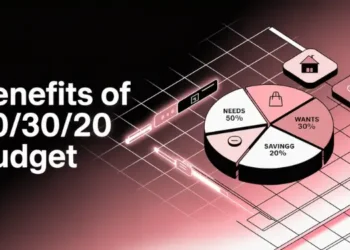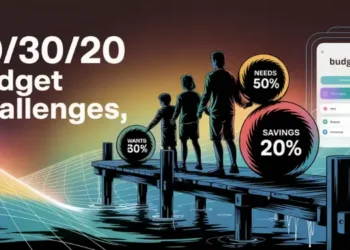Practical ways to cut expenses 50/30/20 keep us calm. We spend 50% on needs, 30% on wants, and 20% on savings.
Want to know how to save hundreds? Gallup found 40% of US adults have no savings. A neighbor in Portland says it changed her life. I felt great when I paid off $800 in three months. Learn more at our 50/30/20 budget guide for real stories.
The 50/30/20 framework allocates 50 percent of income to essential expenses, 30 percent to discretionary spending, and 20 percent to savings or debt reduction. Key reduction tactics include auditing and cancelling under-used subscriptions to free up monthly cash, leveraging shared housing or negotiating lease terms to lower rent, and refinancing high-interest debt through low-fee balance transfers or personal loans to reduce interest outlays by up to 50 percent.
Further cost containment is achieved by planning meals around discounted seasonal produce and batch-cooking to cut grocery bills by up to 12 percent, shifting appliance use to off-peak hours and tightening energy controls to trim utility expenses, and substituting fee-based leisure with no-cost social activities to maintain the discretionary 30 percent without compromising lifestyle.
Key Takeaways:
- Allocate 50% of income to essentials.
- Allocate 30% of income to wants.
- Automate saving 20% of income monthly.
- Audit and cancel unused subscriptions promptly.
- Refinance high-interest debts to reduce costs.
- Plan meals around discounted seasonal produce.
Audit subscriptions for instant monthly savings
Monthly payments are like ropes tied to a fishing dock. Some are important, but others just hold us back. A quick check can show where we waste money.

Many of us pay for things we don’t use. A West Monroe survey found we waste hundreds of dollars a month. This money could help us pay off debt or build a safety net. Learn more about budgeting at this budgeting guide.
Cancelling unused subscriptions can free up to $273 per month, giving you quick, tangible savings to plug into your emergency fund Ref.: “BudgetBakers Team. (2021). How Much You Actually Spend on Monthly Subscriptions. BudgetBakers.” [!]
Cancel Seldom Used Streaming Platforms
Take out a notepad and check your bank statement. Mark any subscription that doesn’t bring joy or value. Keep the important ones and cancel the rest. We’ll take these small steps to save money.
- Locate recurring charges in your online banking
- Decide which entertainment apps you ignore
- Cancel or downgrade to a basic tier
- Tally up freed cash for your emergency fund
| Subscription | Typical Monthly Cost | Potential Monthly Savings |
|---|---|---|
| Premium TV Service | $15 | $15 |
| Game Pass | $10 | $10 |
| Music App | $9 | $9 |
Lower housing costs through roommate arrangements
Sharing a home with a roommate can save a lot of money. The U.S. Census Bureau says it can save hundreds each month. This extra cash can help pay off debts or save for the future.

First, find someone who is tidy and respects your space. Make a list of house rules to avoid problems. Saving money helps us feel more secure.
Roommate savings vary widely by city—from $375 in Scottsdale to over $880 in New York—so local market research is essential Ref.: “SmartAsset. (2025). What a Roommate Can Save You in 100 U.S. Cities – 2025 Study. SmartAsset.” [!]
Negotiate rent when renewing lease
In Maine, landlords like tenants who pay on time. Talking calmly can lead to lower rent. Show them your payment history and local rental prices to make a strong case.
| Tip | Potential Benefit |
|---|---|
| Ask landlord for small rent reduction | Possible $50-$100 monthly savings |
| Negotiate lease length or maintenance agreements | Greater chance of landlord flexibility |
| Document local comps | Stronger case for a fair deal |
Refinance debts to shrink interest drain
High APR can slow us down, like a lobster buoy in the sea. Many Mainers pay over 19% interest on credit cards (Federal Reserve). This can hurt our monthly budgets without us even noticing.

We can cut down on interest by refinancing debts. Local banks and credit unions might offer personal loans at lower rates. Looking for these options can save us money quickly.
Balance transfer fees—typically 3–5% of the amount transferred—can offset potential interest savings if not carefully compared Ref.: “FasterCapital. (n.d.). Balance transfer fees demystified: Understanding the fine print. FasterCapital.” [!]
Seek zero fee balance transfer offers
Some cards let us move balances without upfront fees. It’s important to read the fine print to avoid surprise charges. A smart switch can keep our money safe.
| Card or Loan Type | Typical APR | Possible Refinance Rate | Estimated Monthly Savings |
|---|---|---|---|
| Credit Card | 19.9% | 11% | $30–$50 |
| Personal Loan | 15% | 8% | $20–$35 |
Take 15 minutes now to ask for a fee-free transfer or refinancing quote. We can get back those dollars and move closer to being debt-free.
Plan meals around discounted seasonal produce
When grocery prices go up, using in-season fruits or veggies can help. Families might spend up to 12% less, says the USDA. We can save more money by looking for discounts.
This way, we can use more money for debt or savings. If we spend 50% of our income, we save the rest for fun and goals. Check out this 50/30/20 budget approach to see how it works.

Batch Cook Soups for Stretch Meals
A big pot of soup can feed us for days, so we don’t order takeout. Pick a few cheap ingredients that are always on sale. Mix them with broth, beans, and spices in a slow-cooker.
Then, portion leftovers for easy lunches. This helps us save money and makes cooking easier.
Action Commitment (5 minutes): Look at your market flyer for cheap produce. Choose a soup recipe and get ingredients ready tonight. Start cooking tomorrow.
Reduce utility bills with energy habits
Imagine a Maine harbor at dawn. It’s cold, but small actions keep us steady. For example, 62 percent of Americans live paycheck to paycheck (Federal Reserve). By making small changes, we can save money.
Running washers and dishwashers at night can save a lot. This leaves more money for the 50-30-20 plan.

Run appliances during off-peak pricing
Many places have lower rates at night. Start your wash cycle when it’s dark. Fill the dishwasher only when it’s full.
Here are more easy changes:
- Turn the thermostat down when you’re not home or asleep
- Seal windows and doors to keep out cold air
- Unplug devices that use power when not in use
- Let laundry air dry and open blinds for sunlight
- Take shorter showers to use less water
Take ten minutes tonight to look at your bill. Making a few changes can save you money. Check out this resource for tips on saving money. Small steps can lead to big savings.
Replace pricey outings with free experiences
We all dream of dining out or watching live shows. But these can cost a lot if we do them too often. By choosing free events instead, we can save money. This way, we can stick to the 50/30/20 budget plan.
According to the 50/30/20 approach, 30% of our income can go to wants. But it’s smart to be flexible. This lets us save more for things like student loans or retirement.
Host potluck game nights at home
In Maine, people love hosting potluck dinners and playing board games. It’s a great way to save money and have fun together. As we learned from this guide on how to budget, saving money helps us reach our goals.
Try this: in just five minutes, text a friend or two about plans for next week. It’s a small step that saves money and brings us closer together.












